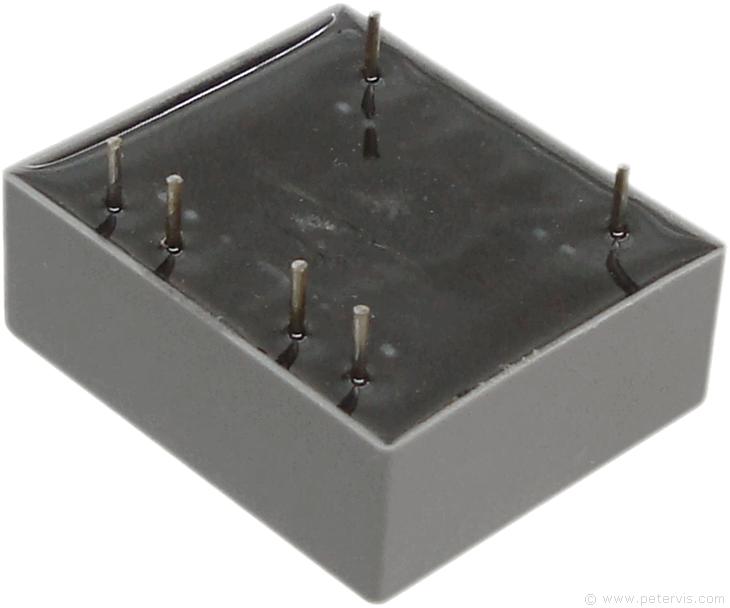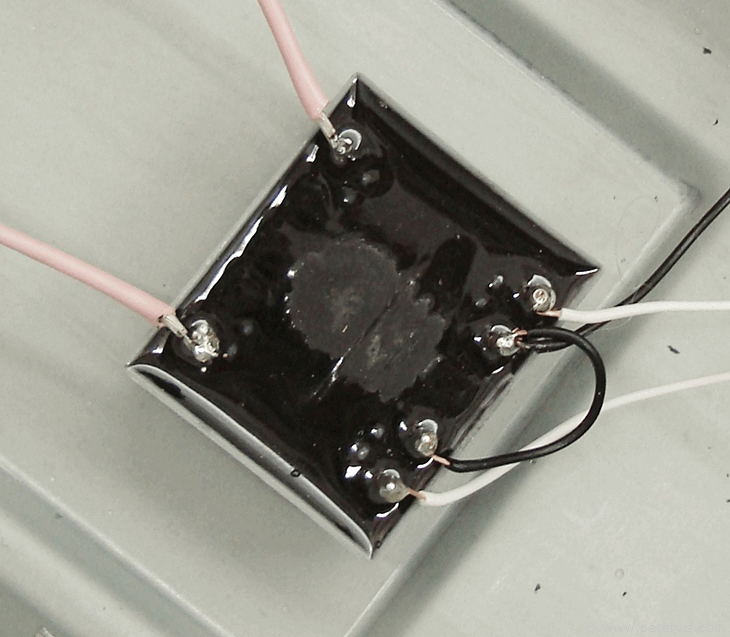Makrai Transformer

The cheapest transformer I was able to acquire was this miniature one manufactured by the Makrai Corporation. As you can see, it has a pair of terminals marked 12 V (AC) on the secondary side, each capable of providing up to 25 mA. These are usually PCB mounted and used in standby systems.
Since the LM324 IC will operate on a wide range of voltages ±1.5 V to ±16 V (split-voltage rails), it gives the hobbyist some hope of finding a suitable cheap transformer. Usually low voltage ones of around 5 V to 6 V are very small and cheap to get. I managed to find an encapsulated mains transformer with a rating of 0.6 VA, and having a pair of 12 V (AC) windings on the secondary. It was less than four pounds including postage at an auction site. These transformers are usually for PCB mounting and used in standby systems, however, I thought it was ideal for my application mainly for price reasons, and the fact it was only 19 mm high including the pins. A small profile like that is useful as it means one can install it in a small box, perhaps an outdated satellite box usually found at recycle centres every year.
Mounting

Although the transformer is best PCB mounted, I did not like the idea of a home-made strip board with LIVE and NEUTRAL strips... Instead, I felt more comfortable soldering the mains wire directly to the pins on the transformer and then sealing them in hot-melt glue from a glue gun. In addition, I also placed some insulating tape for added protection. This way, the mains are kept isolated and far away from the rest of the circuitry. Then all that remained was to solder the wires from the secondary side (low-voltage) to my strip board build. To secure the transformer, I used a blob of hot-melt glue to stick it to the metal side of the box, and it remains there robustly attached for all time.
Making a Centre Tap

The transformer was supposed to provide a pair of 12 V (AC) connections, however when I measured the voltages, I was reading around 16 V (AC) on both pairs of terminals. I had not anticipated that it would be that high. After rectification, and smoothing, the final voltages measured were ±21 V (DC) with respect to the centre tap ground. The absolute maximum power supply rating for the IC is ±16 V (DC), therefore clearly the power supply voltage is slightly high. Therefore, if you get this cheap type of transformer, then you need to choose something with a rating of 6 V AC or thereabouts. In my case, since the current requirement of this IC is so miniscule, and I had already installed it, I decided it let it run on slightly higher voltage. It certainly gives the gain and audio somewhat of a punchy quality.
This Article Continues...
Baxandall Bass and Tone ProjectCircuit and Calculator
Bass and Tone Board Layout
Potentiometer Wiring
Split-Rail Power Supply Circuit
PSU Board Layout
Transformer
Circuit Testing